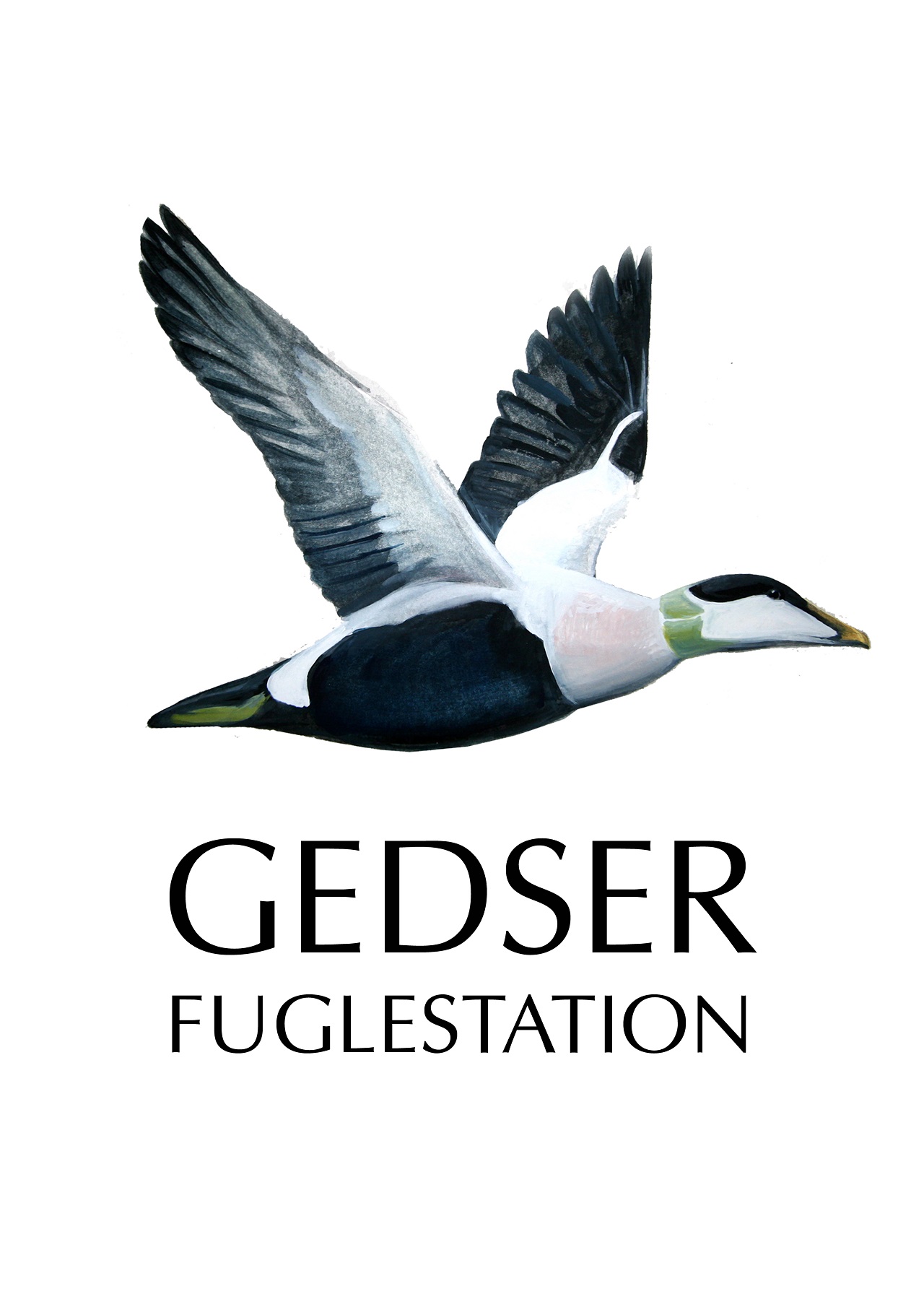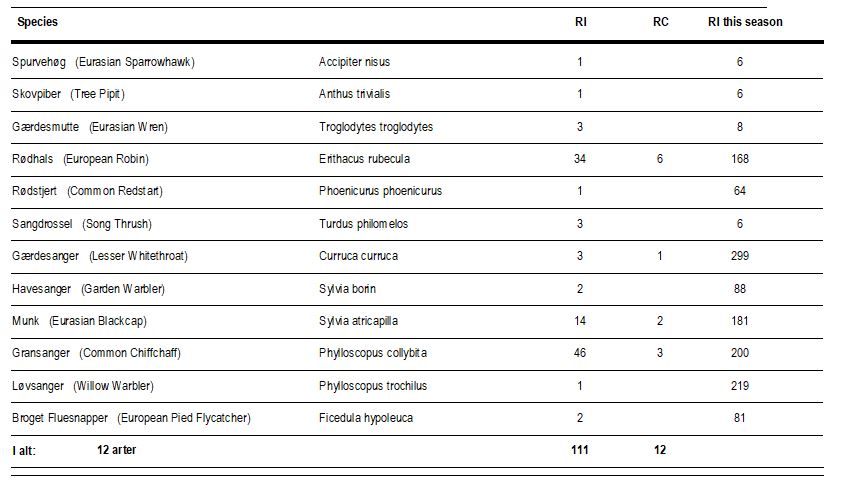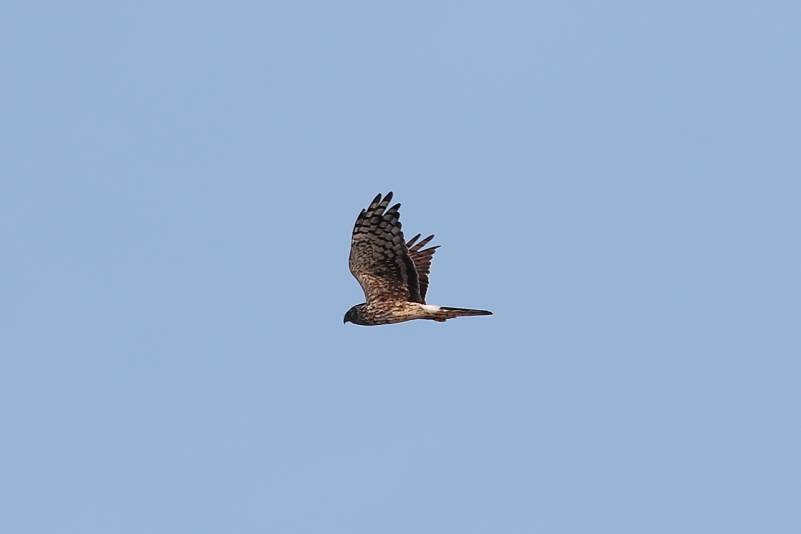Gedser Fuglestation Blog
Her på Gedser Fuglestations blog bringes korte nyheder i dagbogsformat om hændelser på fuglestationen.
Day of the Scoter
Today the same number of birds in the nets as yesterday, 111 new and 12 recaptures. Today more Chiffchaffs “Gransanger” than Robins “Rødhals”, 46 new Chiffchaff “Gransanger” and 34 new Robins “Rødhals”. There was also a big surprise in the Sparrowhawk “Spurvehøg” net, a large first calendar year female got caught. It got a ring and besides that, we took a cloaca sample which will be send to Copenhagen to be tested for viruses by scientists. After she was happy to be freed again.

Sparrowhawk (Spurvehøg)
Again the night was rather cold and there were no clouds. Two factors that influence moth trapping in a negative way. But nevertheless we had 13 species and two new ones: the Small Engrailed (Birke-Barkmåler) a rather common species and the Shy Cosmet Moth (Dunhammermøl) a species that has been found more in the easterly parts of Denmark. It was found dead in a spiderweb.
The picture below is the Canary-Shouldered Thorn (Elle Tandmåler), a nice yellow moth.
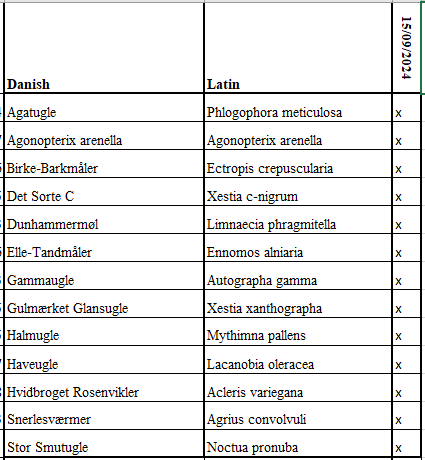
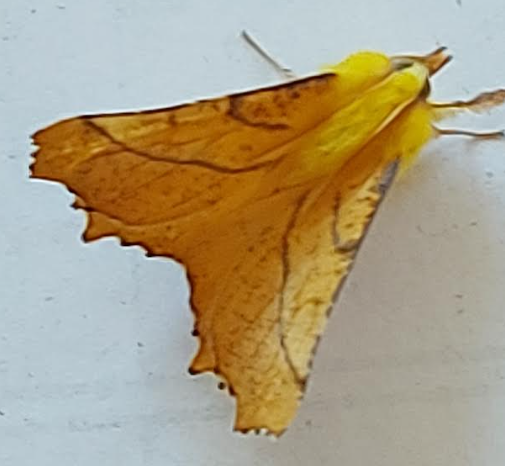
Canary-Shouldered Thorn (Elle Tandmåler)
Migration count at Gedser Odde
by Lara W
A gorgeous red sunrise greeted us at the point this morning, with clear skies and slightly warmer temperatures by mid-morning. Migration continued apace today, with 2814 individuals spotted, representing 31 different species. Amazingly, just over half of this total were Common scoter/Sortand (Melanitta nigra), who flew past in relatively large flocks of up to 85 birds. The almost constant flow of Commons was occasionally punctuated by their rather smarter looking cousin, the Velvet scoter/Fløjlsand (Melannita fusca). Although of a similar stockier build, Velvet scoters sport a clear white wing panel across their secondary flight feathers, which shows up sharply against their otherwise glossy black (males) or sooty-brown (females/juveniles) plumage, even at a considerable distance. Good numbers were also seen of some of the larger species, including 41 Brent goose/Knortegås (Branta Bernicia), 10 Greylag goose/Grågås (Anser anser), 103 Mute Swan/Knopsvane (Cygnus olor), 100 Cormorant/Skarv (Phalacrocorax carbo), 185 Eider/Ederfugl (Somateria mollissima), and 6 Great white egret/Sølvhejre (Ardea alba).
Several interesting species made an appearance out to sea today – a single Red-Necked grebe/Gråstrubet Lappedykker (Podiceps grisegena), along with a Great Crested grebe/Toppet Lappedykker (Podiceps cristatus), 3 Red-throated Diver/Rødstrubet Lom (Gavia stellata), 2 Arctic tern/Havterne (Sterna paradisaea) and 2 Arctic skua/Almindelig Kjove (Stercorarius parasiticus). The Arctic tern is an especially graceful little bird, being a touch smaller than the common tern with longer streamers on the tail, and slightly narrower wings. Rather closer to the shore, a Whimbrel/Småspove (Numernius phaeopus) made a late morning appearance, gliding swiftly round the point south.
Passerine migration was a little more varied than yesterday, with 210 Barn swallow/Landsvale (Hirundo rustica), 144 White wagtail/Hvid Vipstjert (Motacilla alba), 2 Rock pipit/Skærpiber (Anthus petrosus) and 4 Sand martin/Digesvale (Riparia riparia) making the trek south. 51 White wagtails also headed north, perhaps confused by the northerly wind; maybe we will see them again in the next few days as they pass south. The Hirundinidae have, these past days, been gathering in a large flock above the harvested field behind us, partaking in last minute foraging before migrating. Excitement rippled through the gathered birders when a Red-Rumped swallow/Rødrygget Svale (Cecropis daurica) was spotted darting in and out of its cousins up in the skies. A curious little bird with a distinct pale rump, coloured light rusty-red/rufous, although this is only visible from fairly close. The pale cheeks also set it apart from the more typical Barn swallow.
Very few raptors headed out today, with only 4 Sparrowhawk/Spurvehøg (Accipiter nisus), 2 Marsh Harrier/Rørhøg (Circus aeruginosus), and a single Hen harrier/Blå Kærhøg (Circus cyaneus) spotted. The Hen harrier made a few lazy passes in front us as she hunted in the field, allowing LAH to capture a lovely photo of her mid-flight (see below). The barring across the primary flight feathers is particularly obvious and striking in this photo.
Photo credit: LAH
People: Lara Winsloe, Larissa Britton, Robert Luttik, Hanelie Sidhu
